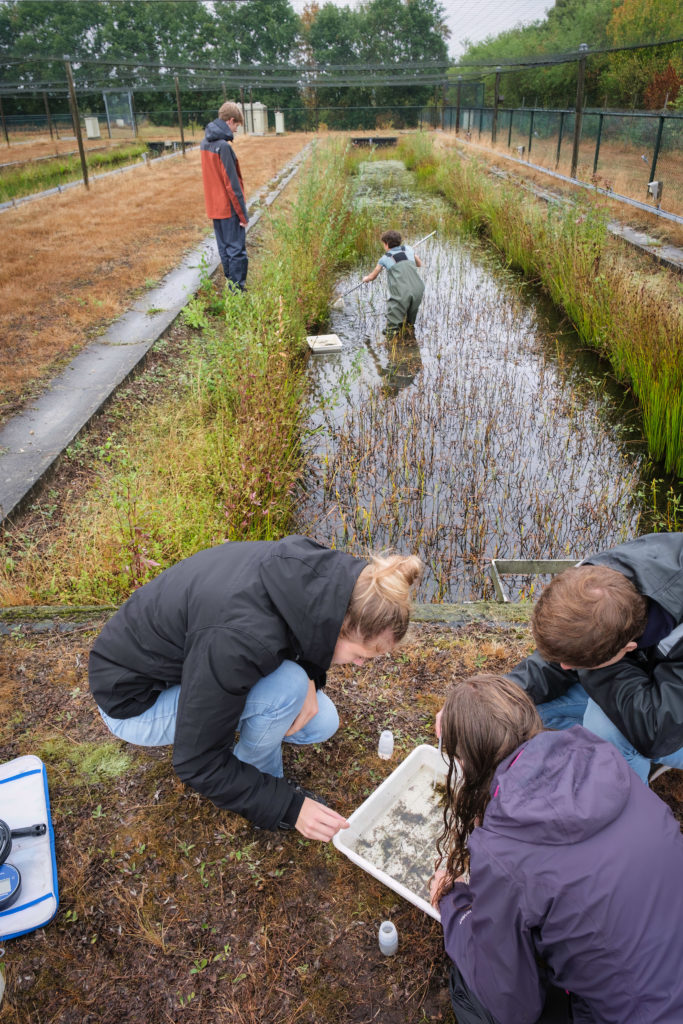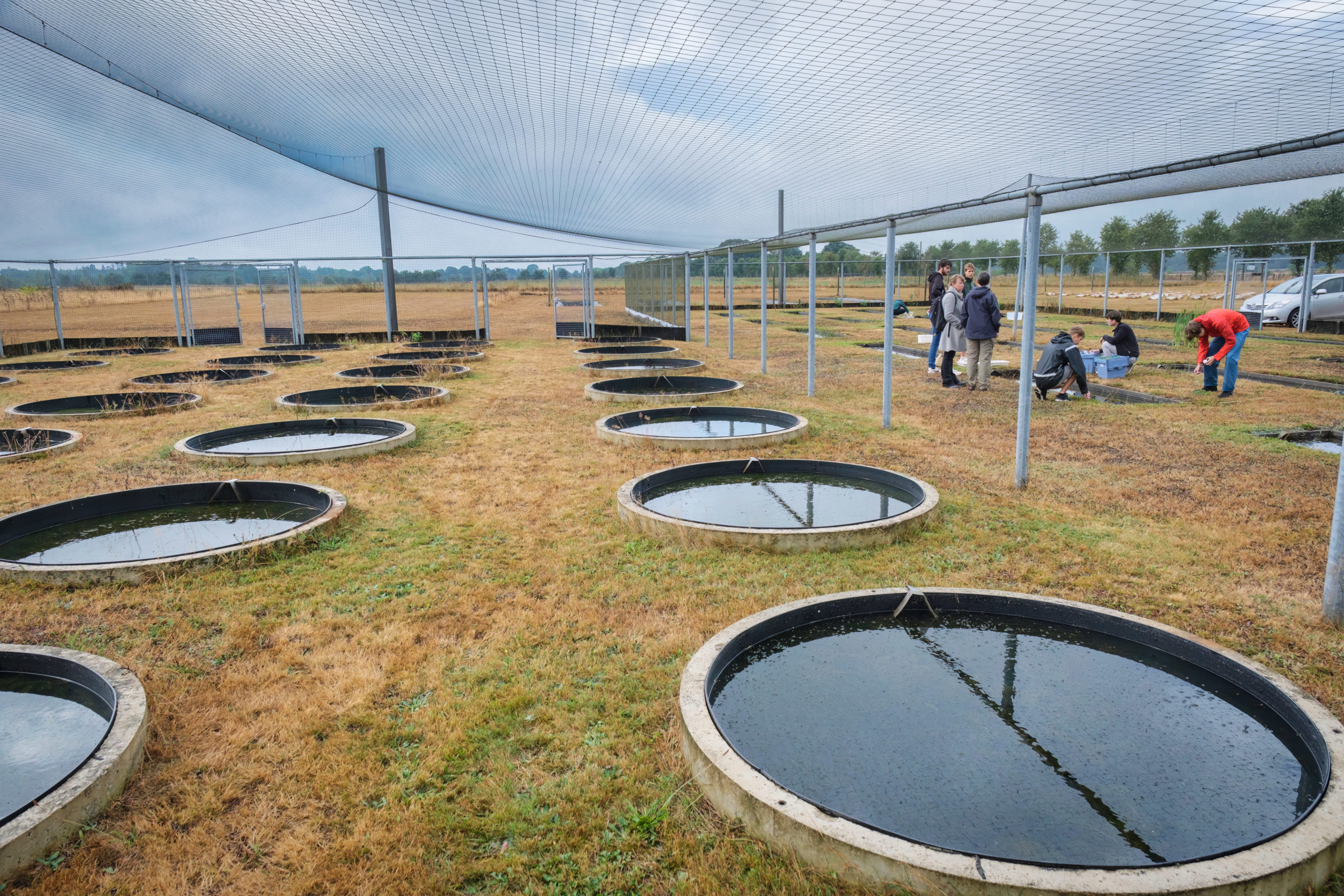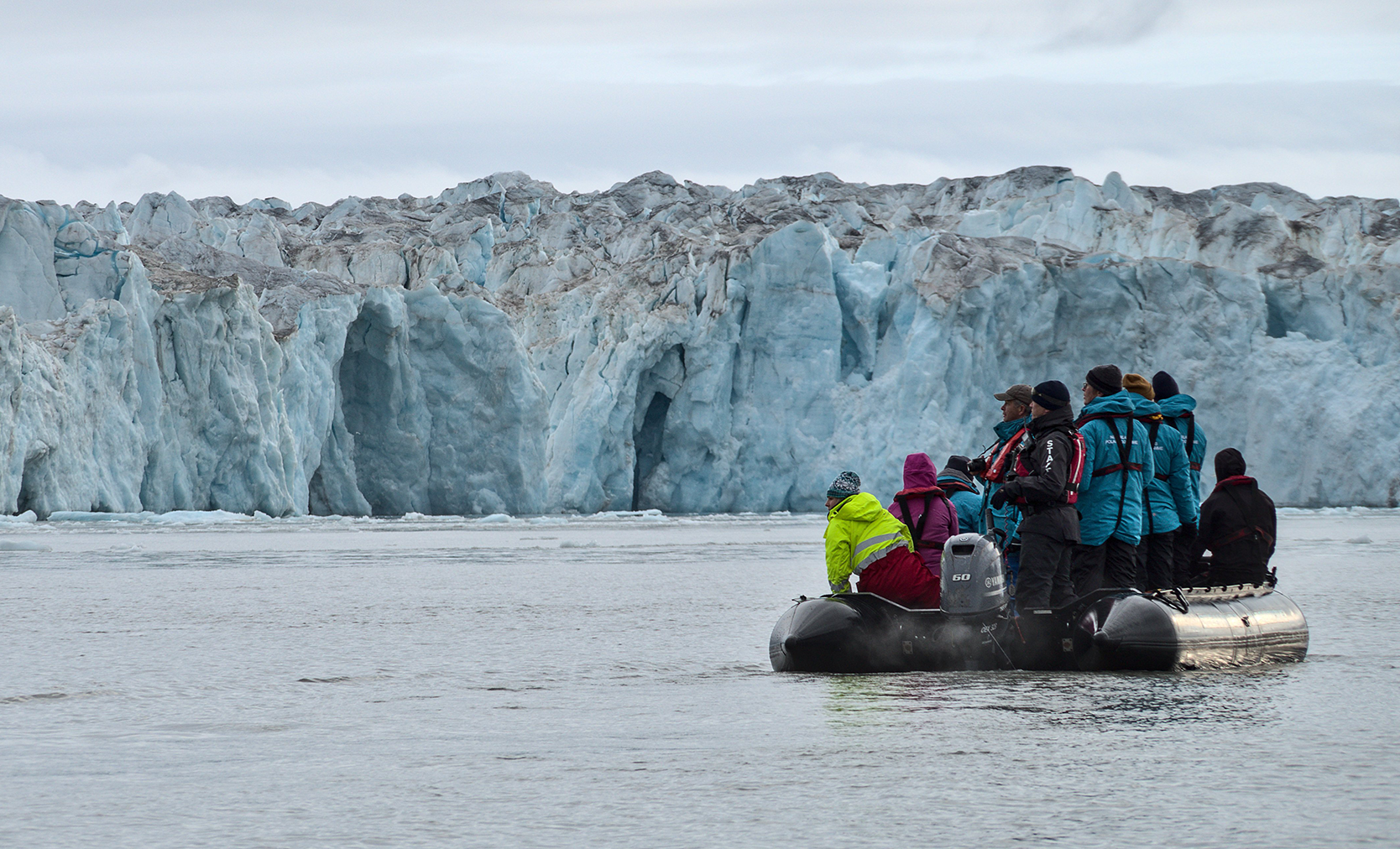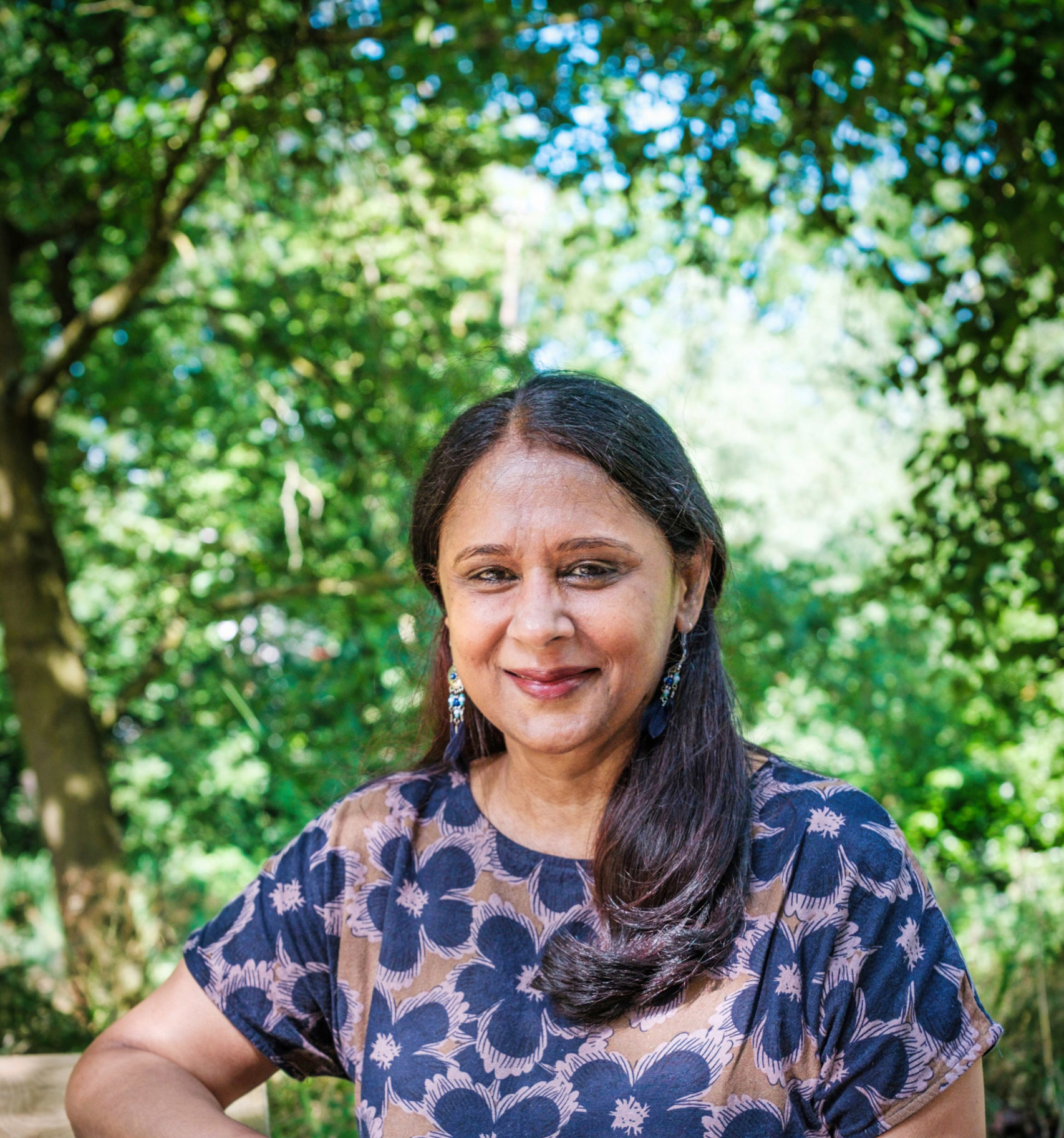Text Tanja Speek
Two weeks before the start of the academic year, teachers Edwin Peeters and Dorine Dekkers noticed that most of the ditches in the Binnenveld, the main location for their practical on Water Quantity and Quality, were bone dry. They hastened to come up with new locations and research questions.
On the first Thursday morning of the academic year, Dorine Dekkers is standing with 13 students of Soil, Water and Atmosphere under an overhang of the building at the Sinderhoeve research site near Renkum. The much longed-for rainstorm pours off the roof and over the fields. The contrast with the reason the practical is being held here could not be greater.
Two weeks earlier, Dekkers and her colleague Edwin Peeters got together to change their plans for the Water Quantity and Quality practical, in which they study aquatic life. Their favourite research spot, the ditches of the Binnenveld, turned out to be so extremely dry that water research was not possible for their 75-plus students. So they found an alternative location at the Sinderhoeve, a WUR research site with artificially created experimental ponds and ditches. Between them, they quickly came up with new research questions to go with the new location. And it worked out even better than they expected.
No mud
‘I came back from holiday and discovered that the Binnenveld really was extremely dry,’ explains Peeters dejectedly. ‘In most places there wasn’t even a layer of mud left in which the last aquatic insects could have survived.’ The Binnenveld is the area between Veenendaal and Wageningen, east and west of the Grift drainage canal. ‘It will be some time before the aquatic life in the Grift and other nearby ditches returns, when everything is nice and wet again.’
There wasn’t even a layer of mud left in which the last aquatic insects could have survived
Learning about aquatic life, especially insects, and how it is related to water quality is precisely what this practical is aimed at. ‘We had problems with drought for the first time four or five years ago, but then it was enough to find a few extra locations in Wageningen. This year, that was definitely not going to be enough for the 18 groups of students we’ve got.’
The teachers quite regularly collaborate with the Sinderhoeve site for their research. ‘By chance, we were both working there, so we decided to see what the possibilities were,’ Peeters says. ‘In the back of your mind, you have already started pondering your options. So when we sat down together, there was a torrent of ideas . That’s the beauty of collaboration.’
Almost all the topics for the practical are new. ‘So, previously, we used to compare the ditches in the east of the Binnenveld with those towards the west, or sandy soil versus peaty soil. We’ve taken that out completely now. We decided to make the topics much more about climate change. And about other ways of sampling, about how to catch the bugs that are found there.’

Gravel
That first Thursday morning, the practical at the Sinderhoeve begins for the students with a guided tour. ‘These ditches and those long ponds over there are available for our practical. The experiment on the effects of fish on aquatic insects is here,’ Dekkers tells the second-year students. ‘Normally, the staff at this location mainly investigate what substances do in the aquatic environment. Drugs or plant protection products, for example. That effect has to be tested before such substances can be sold.’
At a long, straight experimental ditch, a group of students get to work with wire baskets filled with gravel, or with artificial grass. Others use ‘multiplates’, a stack of plywood boards screwed together, with some space in between. ‘We hang them in the water to see which one catches the most water bugs,’ explains one of the students. ‘And whether there is a difference in which material different bugs are drawn to,’ adds his groupmate. ‘Usually we take samples with a net, scraping it over part of the bed,’ explains lecturer Dekkers. ‘There can be big differences in the insects’ favourite substrate, the material they sit on. That makes testing this all the more interesting for us.’
Campus ponds
Peeters talks enthusiastically about another new place where students are sampling the water. ‘The ponds on campus! At the beginning of the summer, WUR held a Biodiversity Challenge. The aim was to discover as many species as possible on campus in a few days. It wasn’t a great success in terms of aquatic insects because there were so many people and for practical reasons. But now we have a group of students who are going to do it properly after all. They will also identify the insects down to the taxonomic level of genus or even species. For the practical, we usually only go down to the level of family.’
So what do the students think about doing their practical in a new location? ‘Why, is it different now?’ asks a second-year student. ‘It used to be in the Binnenveld? Oh, I didn’t know that actually.’ Others see the plus side of the change. ‘I might like this better in fact, it’s really cool to be here too. Something completely different, and we went to the Binnenveld on a course at the end of last academic year.’
The lecturers are certainly very pleased with the new location. ‘All these new topics raise new questions. I get a real kick out of that, it’s such fun,’ confesses Dekkers. Peeters, too, enjoys how they made a virtue of necessity. ‘I’ve been walking around beaming with delight all day.’

 The artificially constructed test ponds and ditches at Sinderhoeve in Renkum. Photo Guy Ackermans
The artificially constructed test ponds and ditches at Sinderhoeve in Renkum. Photo Guy Ackermans 

